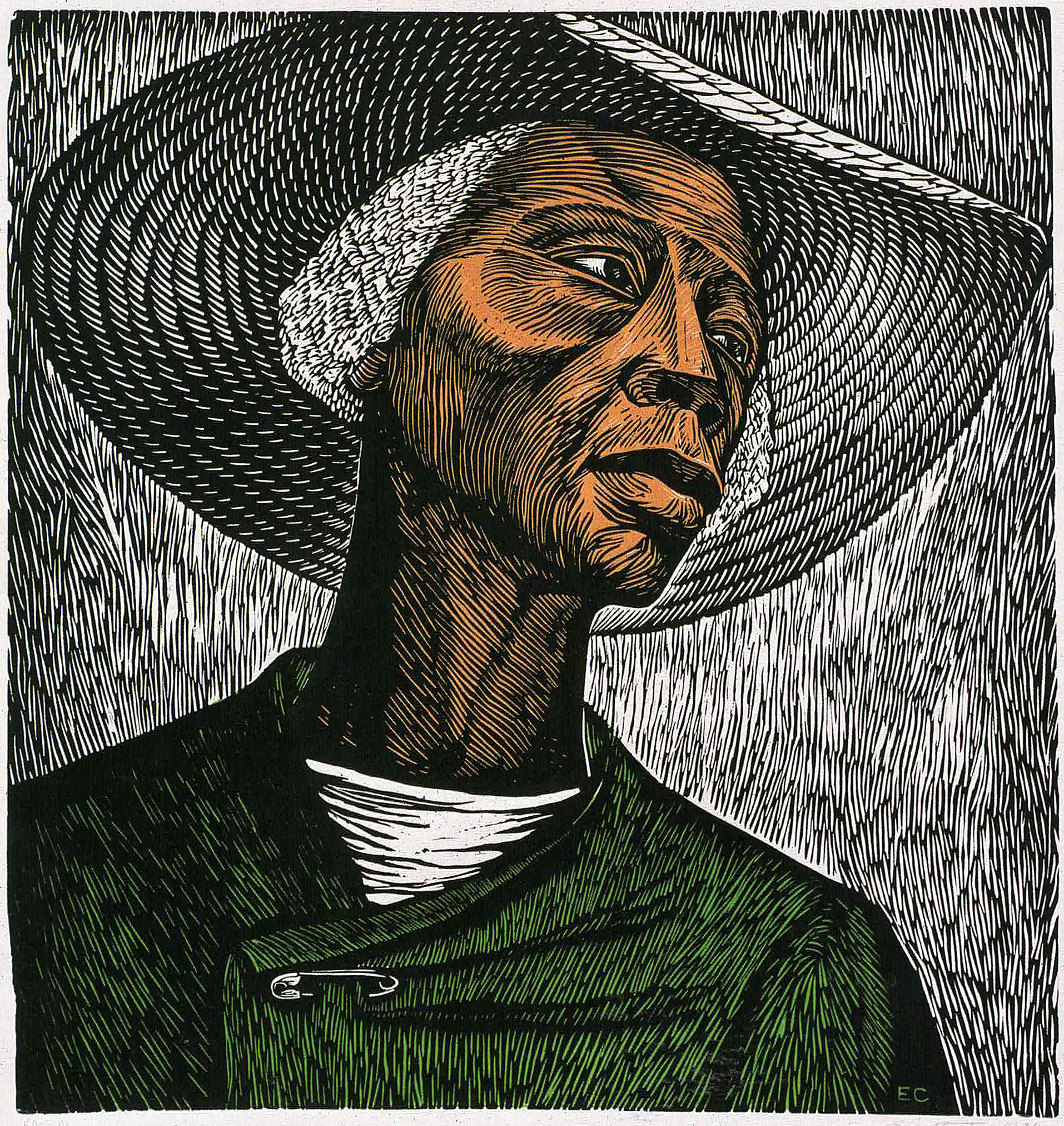Recognized for her political, pro-Black images combining figuration with energetic, graphic lettering, Barbara Jones-Hogu is closely identified with a 1969/71 print titled, Unite. In recent years, the work has been featured in major group exhibitions documenting the contributions and expressions of African American artists during the Civil Rights Movement and Black Power eras, including Soul of a Nation: Art in the Age of Black Power, the seminal show organized by Tate Modern, London. In January 2018, Barbara Jones-Hogu: Resist, Relate, Unite 1968-1975, her first-ever solo museum exhibition opened at the DePaul Art Museum in Chicago.
Jones-Hogu was at the center of the black arts scene in 1960s Chicago. As a member of the Visual Artists Workshop of the Organization of Black American Culture (OBAC), she helped paint the Wall of Respect on Chicago’s South Side in 1967. Paying tribute to more than 50 African American figures, the project is regarded as the first collective street mural in the United States. It revived the mural movement in neighborhoods across the nation, black ones in particular. Jones-Hogu later wrote that the Wall of Respect “became a visual symbol of Black nationalism and liberation.”
In 1968, the year after contributing to the legendary mural, Jones-Hogu helped co-found AfriCOBRA, an artist collective with Jeff Donaldson (1932-2004), Wadsworth Jarrell, Jae Jarrell, and Gerald Williams. (Donaldson and Wadsworth Jarrell were active in OBAC, too.) Initially called COBRA, then African COBRA, the group settled on the name AfriCOBRA, which stands for African Commune of Bad Relevant Artists. The collective focused on positive, powerful, and uplifting images of black people.
The group held regular meetings in Jarrell’s studio and established a set of principles and a collective aesthetic. Their visual themes included syncopated, rhythmic repetition; balance between abstraction and absolute likeness; bright harmonious colors; and active lettering, which was Jones-Hogu’s contribution. In the wake of racism and injustice, AfriCOBRA produced work that put forth a visual counter-narrative that was about affirmation of African American heritage. The goal was to change the community’s mindset and positively influence its outlook.
Barbara Jones-Hogu’s prints were visually complex and in terms of subject matter focused on black women in the liberation movement, solidarity in the black community, and preserving the black family. Titles of her works include, Rise and Take Control (1970), Relate to Your Heritage (1970), and Black Men We Need You (circa 1971). The latter print is in the collection of the Studio Museum in Harlem. Other works have been placed with the Smithsonian American Art Museum, Brooklyn Museum, and the Art Institute of Chicago.




